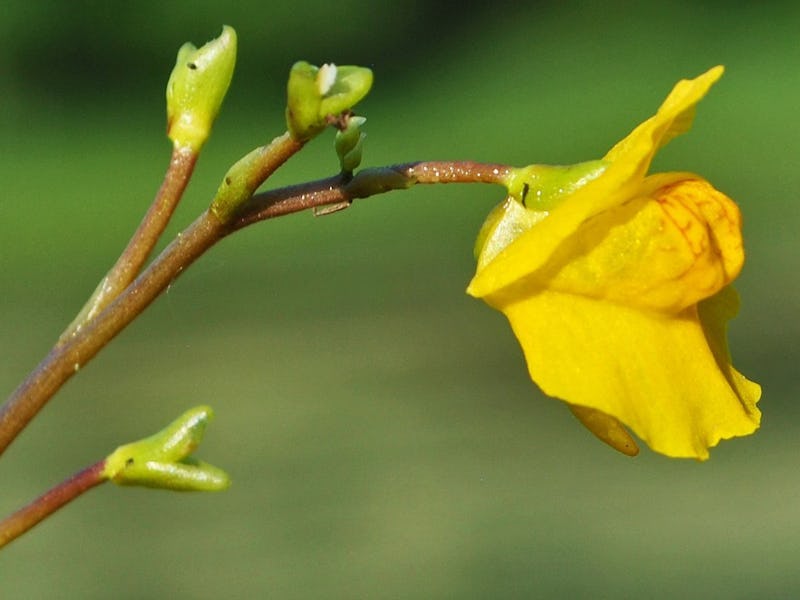The Bladderwort Sucks. It Sucks Fast.
Researchers are working out how the plant became such a suction superstar.

The bladderwort vacuums in its food faster than the blink of an eye, using powerful suction to snatch its prey, which can be any suitably small creature unfortunate enough to get too close. A recently published study is helping reveal exactly how a plant can suck so much, so well.
Improved cameras are allowing scientists to see how the bladderwort is able to trap its prey, as an article appearing in Oxford Journals recently reports.
Utricularia plants — more popularly known as bladderworts — are carnivorous, free-floating flora that possess bladders in which it captures smalle aquatic animals, usually crustaceans. The bladder is triggered when a potential meal brushes against a number of trigger hairs — which results in the organ snapping open and sucking in everything nearby, at reportedly over 600 times the force of gravity. This is common knowledge — yet scientists have remained unable to fully understand what is taking place when the bladderwort chows down.
According to Dr. Simon Poppinga of the University of Freiburg, Germany, as he told Science Daily: “The bladderwort traps are considered as some of the most complex structures in the plant kingdom. They are tiny, they are ultrafast in their sucking motion and they are complicated to investigate. Though being intensively studied…there are still many mysteries about how these devices function.”
Poppinga and his fellow researchers used a scanning electron microscope to review the bladderwort’s dining apparatus — which revealed that the plants don’t follow a uniform structural design, explaining:
“…when we looked closely into trap architecture during our experimental studies we found that different plants have different structural arrangements…We think this might also mean the traps are adapted to lure and to catch different kinds of prey, and this is something botanists need to test.”
The researchers did report the plants all follow a game plan that keeps water out, and allow the walls of the bladder to store elastic energy in order to snap traps faster than prey can escape. However, Poppinga reveals more research is necessary to understand the tiny hairs and trap structures and how it all could eventually influence technology: “If we can work out how the bladderwort can grab food so quickly, it could also have applications in other fields by helping us develop tools that can rapidly capture small samples of fluids. Finding out how a bladderwort sucks could possibly also lead to biomimetic technical innovations.”